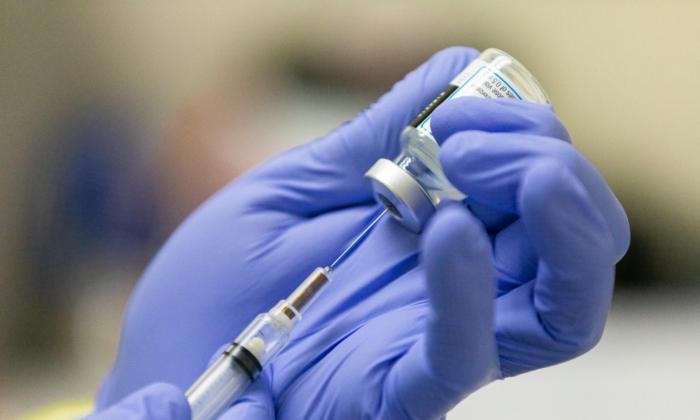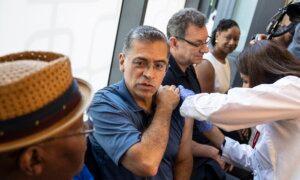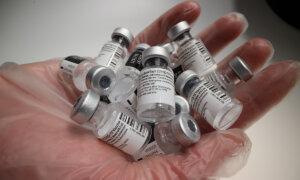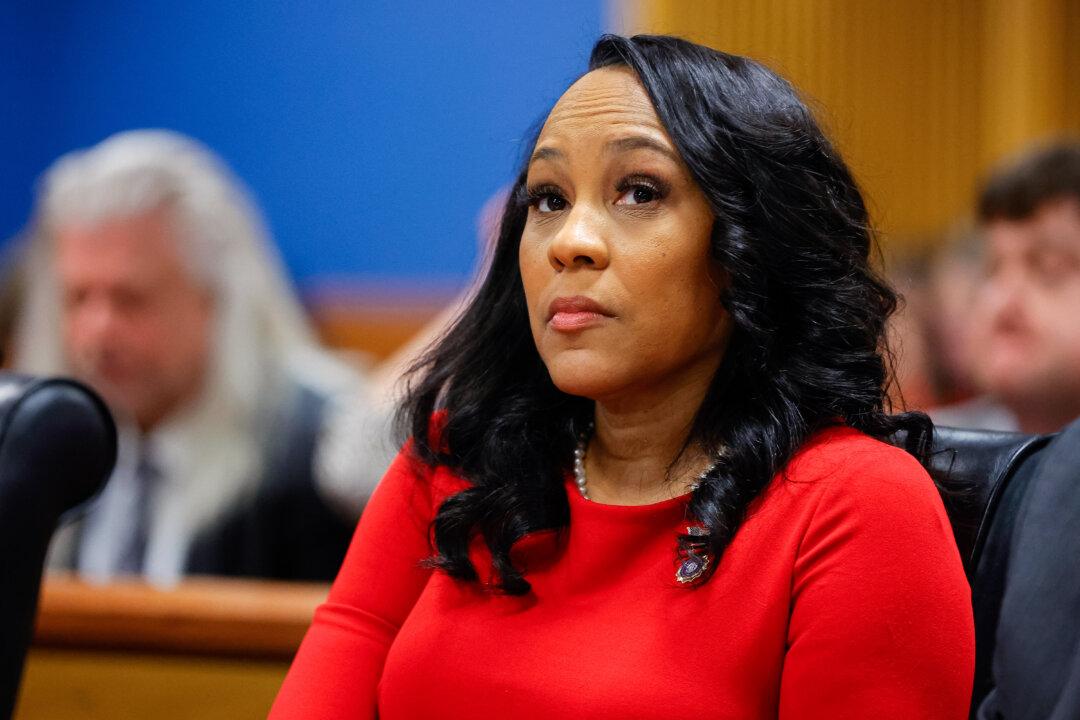Shares of pharmaceutical company Moderna have slumped again amid concerns about COVID-19 vaccine demand in the United States.
Over the past five days, shares of the company dropped about 18 percent, while over the past month, the stock has decreased by 20 percent. For all of 2023, meanwhile, shares of Moderna have plummeted by 54 percent.
Moderna stated this week that it’s “still too early in the U.S. vaccination season to accurately project where vaccination rates will land for the full year.” The company said it will soon have “improved visibility” about the U.S. market size after it reviews October’s trends and will provide an update in November.
Biden Admin Pushing Vaccination
Pfizer last week said that it expects sales of its vaccine, which uses mRNA technology like Moderna’s COVID-19 shot, will be about $2 billion lower than its previously expected forecast due to lower-than-expected rates of people taking the vaccine.“The administration remains committed to pulling every lever at its disposal during the fall respiratory vaccination campaign, encouraging the American public to stay up to date on their vaccines to keep themselves and their loved ones safe,” a Department of Health and Human Services (HHS) spokesperson told The Epoch Times on Thursday. “As a result of these efforts, around 10 million Americans have been vaccinated since the updated vaccines were authorized, and recommended last month.”
HHS officials stated that they plan to keep distributing more doses of the vaccines. The HHS spokeswoman said the government isn’t concerned about possible waste.
“We haven’t heard of any concerns about ordering too many” or not enough children getting them, she said.
Winter Projections
In July, COVID-19 hospitalizations had been increasing for several consecutive weeks. CDC historical data suggest that deaths have been relatively low compared with previous years.Although there has been a drop in hospitalizations over several consecutive weeks, the CDC issued a report on Oct. 6 saying that COVID-19 remains a “public health threat” for older Americans and called on people again to get the updated COVID-19 booster vaccine. Older adults, it said, make up the majority of hospitalizations across the United States, although that has been consistent with historical trends.
The CDC has said the agency is expecting a “moderate COVID-19 wave” for the coming winter, claiming that the peak will match last winter’s hospitalization figures. “COVID-19 could peak earlier than last season, however, because of limited summer activity compared to past years,” the agency added in September.
“This increase could result from the emergence of a new COVID-19 variant with an increased ability to evade the body’s prior immunity, or from a severe influenza season combined with COVID-19 and RSV waves that are similar to last year, or, as we saw last year, an increase in RSV infections,” it said. “A key factor is the timing of the peak number of hospitalizations associated with each disease and whether those peaks coincide.”







